How to make a Muse Map of the Problematique-style guitar sound
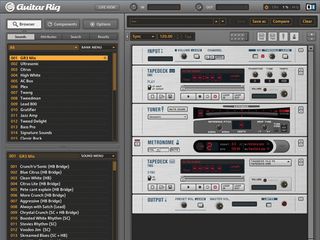
Getting started
Step 1: The guitar effect on Map of the Problematique was created by routing guitar parts through various analogue synth and pitchshifter chains. If you don’t have such luxurious kit at your disposal, though, you can still get the sound. The most convenient software to do it with is Native Instruments’ Guitar Rig 3 (click here to download a demo). Load up the plug-in or standalone version.
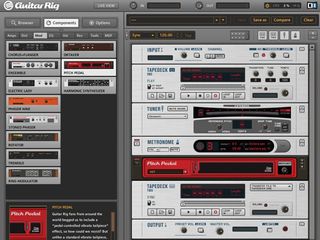
Pitch pedal
Step 2: The Problematique effect is characterised by its synchronised pitchshifting, which sounds much like an arpeggiator. Guitar Rig 3 has a built in pitchshifter, which can be found in the Components»Mod category. Drag Pitch Pedal from the list of components into the rack on the right.
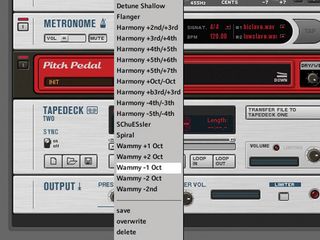
PItch range
Step 3: You can alter the frequency of the input signal by moving the Drag slider left and right. We want the pitch range to be set to -1 octave, so click the menu that currently says INIT and select Wammy -1 Octave.
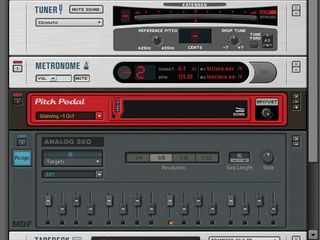
The sequencer
Step 4: Rather than controlling the pitchshifting manually, we want Guitar Rig 3 to do it for us. Bring up the MDF (modulation framework) section of the Components view and drag the Analog Sequencer into the rack. This sequencer is synced to your host’s tempo – or Guitar Rig’s internal one if you’re running the standalone version.
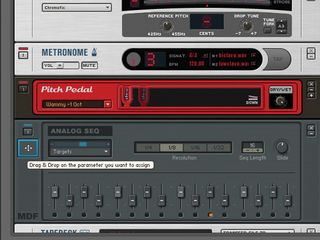
Routing the pitch
Step 5: Before the sequencer can have any effect on the Pitch Pedal, we need to route its output correctly. Drag the Assign button on the Analog Sequencer to the Drag slider on the Pitch Pedal. Now, on playback, the sequencer fader levels will control the pitch.
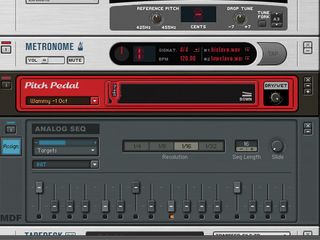
Programming the sequencer
Step 6: Change the Analog Sequencer to 1/16 Resolution and set all the sliders to -1 (ie, all the way down). At these settings, no pitchshifting will occur. Turn the first, seventh and 13th sliders all the way up to +1. This activates the pitchshifting on those steps. Turn the Slide knob all the way down.
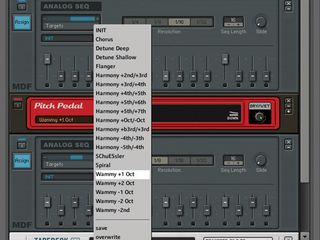
Repeating the process
Step 7: Try playing your guitar or some audio through the effect. The audio will be pitchshifted down an octave on steps 1, 7 and 13. Next, we need to create another Pitch Pedal and Analog Sequencer. Follow steps 2 to 6 again, but this time set the Pitch Pedal mode to Wammy +1 Octave.
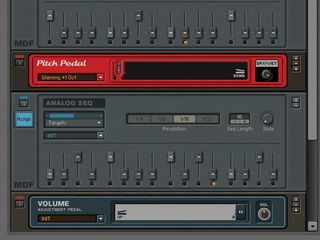
Arpeggiation
Step 8: This time set all the sliders to -1, apart from steps 3, 5, 9, 11 and 15, creating an arpeggiator effect similar to one employed by Muse. The intro of the track also features a gate-style rhythm, which we can imitate using an Analog Sequencer routed to a Volume Adjustment pedal. Here, the Slide control comes in useful for making the effect more or less staccato.
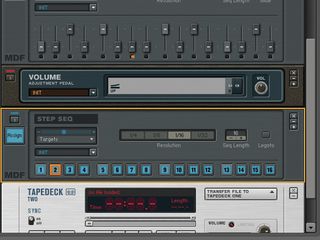
Another approach
Step 9: An alternative to modulating the Volume Adjustment pedal with the Analog Sequencer is to employ the Step Sequencer instead. You may find this approach more convenient as you can simply turn steps on and off, which is quicker than using a lot of sliders. Both methods have their uses, though.

Computer Music magazine is the world’s best selling publication dedicated solely to making great music with your Mac or PC computer. Each issue it brings its lucky readers the best in cutting-edge tutorials, need-to-know, expert software reviews and even all the tools you actually need to make great music today, courtesy of our legendary CM Plugin Suite.
Most Popular





